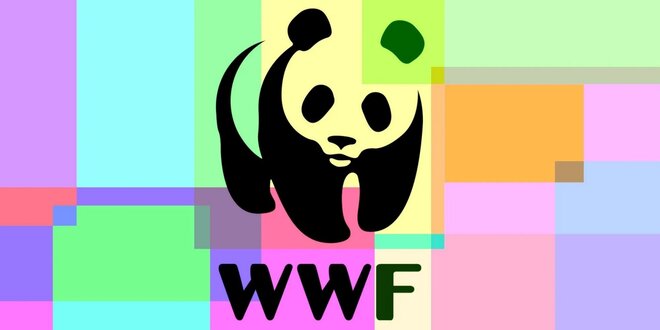The World Wildlife Fund of the U.K. arm started to sell NFT (non fungible tokens) on 3rd February 2022 to finance its conservation efforts. Perhaps unsurprisingly, the action has attracted criticism. Within a few days after the release of the WWF NFT, it hyped up and then slowly canceled its plans to raise money for conservation efforts by minting its own NFTs. The UK chapter of WWF released a firestorm by unleashing “Tokens for Nature” that depicted 13 endangered species. The tokens looked like glass cubes encasing every animal: a Javan rhino, giant panda, and Galápagos penguin, to name some. And they really pissed other environmentalists.
According to digital currency economist Alex de Vries, who has been outspoken about the risks some digital currencies pose to the environment,
“My initial response [to World Wildlife Fund’s NFTs] was they must be joking … They’re supposed to be all for sustainable innovations, and they’re getting involved with one of the least sustainable things on the planet.”
World Wildlife Fund Is Selling Endangered Species NFTs
As of Feb. 3, the World Wildlife Fund for nature in the U.K. has started to sell NFTs that were themed around 13 varied endangered species. The official website of the conservation group portrays that nearly 7,900 individual NFTs were on sale, which was equivalent to the total number of animals that remained among those species.
During its release, at least 300 people have bought NFTs from the series, as per the statistics from the OpenSea marketplace group. This amount had a trading volume of 11.6 ETH ($30,800).
Users who purchased the NFTs received ownership of the digital media pinned to each token. They would also receive discounts on merchandise from CyberKongz, online meetings with a conservationist, and World of Women, and other promotional discounts. The series offered artwork from the digital artists Yam Karkai and Ted Chin (TedsLittleDreams).
World Wildlife Fund: What Was The Controversy About?
The World Wildlife Fund seemed to think that it had found a solution to the climate controversy revolving around non fungible tokens by functioning with the Polygon, which is a so-called Layer 2 blockchain that is attached to the Ethereum network. But Polygon asserts that transactions on its blockchain use very little energy. Factoring in its relationship with Ether, experts estimate that a single transaction on Polygon is a whopping 2,100 times greater than what WWF estimated.
At the heart of the disparity is whether, and in what scenario, Layer 2 blockchains decrease the consumption of energy. While most NFTs are part of the Ether blockchain, the way this blockchain verifies transactions is expensive, slow, and energy-intensive. As Ethereum becomes more crowded, entities are looking for new ways to incline it up. You can think of a Layer 2 blockchain like Polygon as a sort of carpool lane that is to the Ethereum highway.
Like a carpool lane, Layer 2 networks are subjected to be able to fast-track all transactions. This apparently saves money, time, and is important for the environmental claims of Polygon and its energy. In one blog post illustrating its energy use, Polygon terms itself
“the eco-friendly blockchain scaling Ethereum.”
Because Ethereum avails an energy-hungry system to validate transactions, it has an annual carbon footprint that can be compared to Singapore, by experts’ estimates. Polygon states its environmental footprint and own energy is just a tiny portion of that as it uses a varied process for validating transactions.
Sale Of World Wildlife Fund NFT Attracted Backlash
The WWF selected to issue tokens on Polygon (MATIC), which is a second-layer network for Ether. The conservation group noted that Polygon utilizes little energy. It states,
“Each transaction has the equivalent carbon emissions of a glass of tap water.”
Despite the decision of the organization to use a sustainable blockchain, the declaration saw immediate backlash. Catherine Flick, who is a faculty member at De Montfort University, noted that Polygon is a second-layer protocol for ETH. As such, Polygon arguably supports the energy-intensive working of crypto mining despite the idea that it uses very little energy itself.
Ethereum is presently moving to a PoS (Proof-of-Stake) system, which will discard mining and decrease its energy consumption. Currently, however, Ethereum uses 106 TWh of energy every year, which can be compared to the annual energy consumption of the Netherlands.
Other critics further stated that the German division of WWF offered similar NFTs last November, which saw the same backlash. Nevertheless, that campaign has successfully raised $245,000 to date.
Conclusion
The next day after releasing the “Tokens for nature”, the World Wildlife Fund UK planned to end this trial. They have said that they identify that non fungible tokens are a much debated topic and they have a lot to learn from the latest market. This statement has been given by the group of environmentalists of the WWF Germany. The Non Fungible Animals by WWF Germany on the other hand was launched in November 2021 and is still raising money for conservation. They even said that for them it was never about money. Their main aim was to raise awareness regarding the extinction of the species. This is often termed as the World Wildlife Fund scandal, but no scam or money laundering, in this case, has been reported.
- Which Is The Best Bitcoin Mining Software? - 03/08/2024
- Reddit NFT Airdrop: How To Participate In It? - 03/08/2024
- Senso Airdrop Deadline Inches Closer. How To Participate? - 03/08/2024
 Crypto Venture News One stop Crypto Track Down
Crypto Venture News One stop Crypto Track Down 






